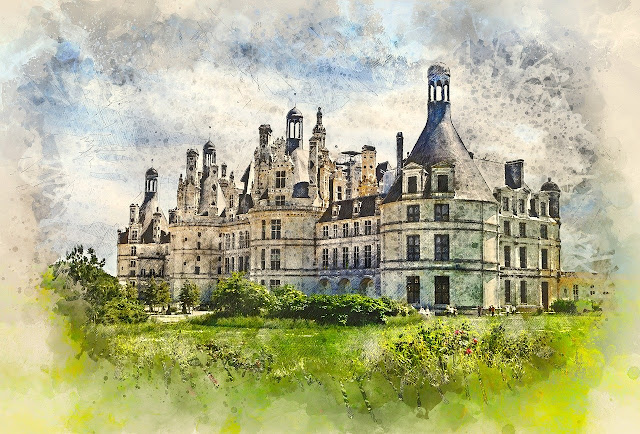Let me bring you to one of Cairo's history sites, and make sure you don't miss out on this fantastic tourism destination. This blog will offer you a history of Muiz Street and will let you experience the atmosphere of old Cairo.
LIST OF CONTENTS
DESCRIPTION OF AL-MUIZZ STREET
AL-MUIZZ STREET HISTORY TIMELINE
LOCAL GUIDE AT AL-MUIZZ STREET
LIST OF CAIRO HERITAGE BUILDING COMPLETED WITH YEAR
- MOSQUE AT AL-MUIZZ STREET
- BUILDING AT AL-MUIZZ STREET
- MADRASA AT AL-MUIZZ STREET
KHAN EL KHALILI
COFFE TIME AT OLD CAFÉ
DESCRIPTION OF AL-MUIZZ
CREDIT: By Sailko - Own work, CC BY 3.0, https://commons.wikimedia.org/ - BAB AL FUTUH
Al-Muizz li-Din Allah al-Fatimi street or al-Muizz street referred to as Qasaba (center of the city) is one of the oldest streets in Cairo since the Fatimid dynasty in the 10th century under their fourth caliph, Al-Muizz. Mu'izz li-Din Allah.
You will be satisfied walking on Al-Muizz which is one of the longest roads that stretches up to one kilometer. Do you want to go back in time to the 11th century exactly? Just walk past the city gates of Bab al-Futuh and Bab Zuweila these two entrances were built in the 11th century by the vizier Badr al-Jamali. Very impressive
al-Muizz is the heart of the city as well as the center of the economic zone located in the market and al-Muizz is the main axis of economic and religious life in the city of Cairo. There are many historical buildings especially Islamic architecture due to many important monuments especially in the Bayn al-Qasrayn area.
AL-MUIZZ HISTORY TIMELINE
CREDIT: By Sailko - Own work, CC BY 3.0, https://commons.wikimedia.org/
969 AD The Fatimid dynasty conquers Egypt under the command of the general, Jawhar al-Siqilli.
970 AD Jawhar built a new city to serve as the residence and center of power of the Fatimid Caliphs. This city was named al-Mu'izziyya al-Qaahirah / City of Victory al-Mu'izz" which was later called "al-Qahira" and later became Cairo.
Jawhar governed the city with two large palaces for the caliphs in the center of which there was an important square known as Bayn al-Qasrayn ("Between the Two Palaces") in this historical period of the city, Cairo was a restricted city which was only accessible to the caliph, soldiers, state officials, and other persons necessary for the functioning of the city palace.
1171 The Fatimid regime collapses under Salah ad-Din (Saladin) and the Ayyubid Sultan wants to remove Fatimid influence. The city was opened to ordinary people and underwent a major transformation. Qasaba street (al-Muizz street) turned into shops and souqs (markets) and the Khan al-Khalili commercial district flourished. Khan al-Khalili: a souq district stretching between al-Muizz street and al-Hussein square. (Dating from the Mamluk period, with many changes over time.)
During the Mamluk period in particular, the street was lined with major architectural monuments, many of which still stand today. Royally sponsored new buildings continued to be built even in the 19th century under Muhammad Ali Pasha and his successors.
LOCAL GUIDE AT AL-MUIZZ STREET
Go around and view a historical building and appreciate the historic structures on Jalan Muizz, here are the heritage buildings that you must see and the architecture is certain to be amazing:
LIST OF CAIRO HERITAGE BUILDING COMPLETED WITH YEAR
MOSQUE
CREDIT: By Sailko - Own work, CC BY 3.0, https://commons.wikimedia.org/
1013 Mosque of Al Hakim bi Amr Allah
1125 Mosque of al-Aqmar
1160 Mosque of Salih Tala'i
1420 Mosque of Muayyad
1425 Mosque of Al-Ashraf Barsbay
1440 Mosque of Taghri Bardi
1744 Mosque of Shaykh Ali Al-Mutahhar
1735 Fakahani Mosque
1839 Mosque of Sulayman Agha al-Silahdar
BUILDING
1339 Qasr Bashtak
1285 Complex of Qalawun
1408 Zawiya of Farag Ibn Barquq
1456 Hammam of Sultan Inal
1535 Sabil-Kuttab of Khusraw Pasha
1505 Mausoleum of Sultan Al-Ghuri
1648-1796 Bayt al-Suhaymi
1650 Qasaba of Radwan Bey
1744 Sabil-Kuttab of Abdel Rahman Katkhuda
1796 Wikala and Sabil of Nafisa Bayda
1828 Sabil of Ismail Pasha
1820 Sabil of Tusun Pasha
MADRASA
CREDIT: By Sailko - Own work, CC BY 3.0, https://commons.wikimedia.org/
1229 Madrasa of Al-Kamil Ayyub
1250 Madrasa of Al-Salih Ayyub
1304 Madrasa of Al-Nasir Muhammad
1386 Madrasa of Barquq
1505 Madrasa of Sultan Al-Ghuri
KHAN EL KHALILI
Make sure you go visit Khan El Khalili, where you can get stunning turquoise rings, wallets and notes with pharaoh images, and belly dance foot jewellery. Khan el-Khalili is a well-known market and souq in Cairo's old centre and established as a hub of trade during the Mamluk era, has since become one of the city's key attractions for both tourists and Egyptians. It also houses numerous Egyptian craftsmen and workshops that produce traditional crafts and souvenirs.
On the other hand, the street view at night has been modernized with the installation of sophisticated exterior lighting on the buildings and even lights reflecting beautifully on the cobblestone streets. Many traditional lamps for sale, handicrafts, cafés, spice shops and the fun is smelling the smell of burnt bukhour so that your trip is guaranteed to be a very sacred journey
COFFE TIME AT OLD CAFÉ
After a long day of walking and feeling fatigued, why not sip a coffee surrounded by this wonderful architecture and souq, and your coffee will turn magical and you will never forget the moment?
SOURCE
WIKIPEDIA

























0 Comments